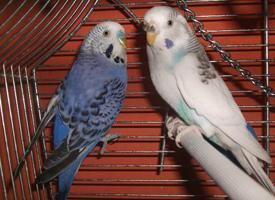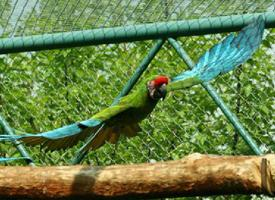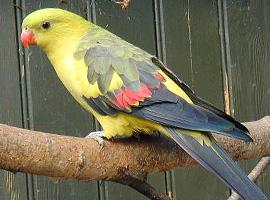
Connu aussi comme
- Papoušek vlnkovaný
- Andulka
Poids et mesures
| Hauteur au garrot | 18 cm |
|---|---|
| Poids | de 26 à 29 g |
Données biologiques
| Durée de vie | 10 r |
|---|
Description de l'animal
The Budgerigar, also commonly known as the Budgie or Parakeet, is a small, long-tailed, seed-eating parrot scientifically named Melopsittacus undulatus. Originating from Australia, this bird species has gained immense popularity worldwide as a pet due to its vibrant plumage, sociable nature, and relatively easy care requirements. Budgerigars boast a captivating array of color mutations, although the wild-type budgie is primarily light green with black bars on its wings, back, and head. Domesticated varieties, however, exhibit colors ranging from blues, whites, yellows, to greys, often with attractive, varying patterns.Adult budgerigars typically measure around 18 cm (7 inches) in length and weigh between 30 to 40 grams. Their sleek, streamlined bodies are perfectly adapted for flight. One of the most distinctive features of the budgerigar is its seed-based diet in the wild, primarily consisting of various grass seeds. In captivity, their diet can be supplemented with vegetables, fruits, and formulated pellets to ensure a balanced nutritional intake.
The budgerigar is renowned for its playful demeanor, intelligence, and remarkable ability to mimic human speech and sounds, a trait that has endeared them to bird enthusiasts around the globe. These birds are highly social animals, both in the wild, where they live in large flocks, and in captivity, where they thrive on interaction with their human caretakers or other birds. It is this social nature that necessitates companionship for captive budgerigars, as isolation can lead to stress and health issues.
Breeding in their native Australian habitat typically occurs in response to the rainy season when food is abundant. Budgerigars nest in tree cavities, where the female lays between four to six eggs, which she incubates for about 18 days until they hatch. The chicks are then fed by both parents and are ready to leave the nest approximately 30 days post-hatching.
In terms of vocalization, budgerigars are capable of producing a wide range of sounds, from sweet, melodious chirps to mimicked phrases and tunes they've learned from their human families. This vocal dexterity is matched by their playful nature; budgerigars are known to engage with toys, mirrors, and even simple puzzles, demonstrating their intelligence and need for mental stimulation.
Despite their small size, budgerigars have a relatively long lifespan in captivity, with many living up to 10 years or more, provided they are given proper care. This care includes a well-balanced diet, regular veterinary check-ups, a clean and spacious cage, and, crucially, plenty of social interaction and mental stimulation.
In conclusion, the Budgerigar is a fascinating and delightful companion animal that brings joy and color to many households. Their relatively easy care, combined with their friendly and engaging personalities, makes them an excellent choice for both novice and experienced bird enthusiasts. Whether observed in the wild or enjoyed as a cherished pet, the Budgerigar remains one of the most beloved avian species across the globe.
Animaux similaires
Nouvelles photos d'animaux
Top 10 des animaux
- Dolphin gull (Leucophaeus scoresbii)
- Japanese macaque (Macaca fuscata)
- Stone loach (Barbatula barbatula)
- Greek tortoise (Testudo graeca)
- Russian tortoise (Testudo horsfieldii)
- Galápagos tortoise (Geochelone nigra complex)
- Diana monkey (Cercopithecus diana)
- Moustached guenon (Cercopithecus cephus)
- Common flying dragon (Draco volans)
- Galápagos penguin (Spheniscus mendiculus)


